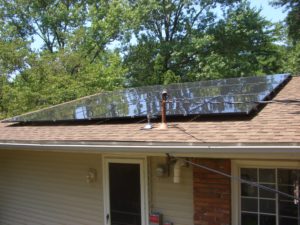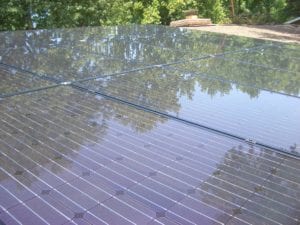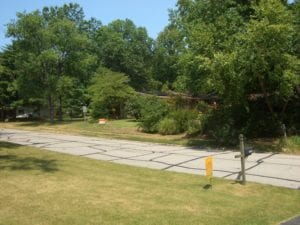Saving with Solar
 For those of you who’ve been following my blog or Going Green column for a while, you may recall the success story on home energy efficiency I wrote about late last year. Since our first energy audit in 2007, we’ve made a number of improvements to our home to reduce the amount of energy we use. These improvements include replacing almost all of our incandescent lighting over to CFL or LED (including the holiday lighting), and weatherstripping the leaks around doors, windows and electric outlets and switches on all of the walls with an exterior face. Perhaps more importantly, we started turning off computers that used to be on all day and night, and plugging electronics into power switches that we can turn off completely. We actually started looking at our usage, and simply became more conscious of the energy we consumed.
For those of you who’ve been following my blog or Going Green column for a while, you may recall the success story on home energy efficiency I wrote about late last year. Since our first energy audit in 2007, we’ve made a number of improvements to our home to reduce the amount of energy we use. These improvements include replacing almost all of our incandescent lighting over to CFL or LED (including the holiday lighting), and weatherstripping the leaks around doors, windows and electric outlets and switches on all of the walls with an exterior face. Perhaps more importantly, we started turning off computers that used to be on all day and night, and plugging electronics into power switches that we can turn off completely. We actually started looking at our usage, and simply became more conscious of the energy we consumed.
In addition, last fall we had more cellulose insulation blown into our attic so it’s now rated at R49, and upgraded our boiler and water heater to a dual-purpose high efficiency unit that has cut our gas bills in half. We also installed a 16 SEER air conditioner and heat pump that has cut our cooling costs in June to half of what it was last year. The result of all of these improvements is that our electricity usage dropped from over 14,000 kilowatt hours (kWh) in 2008 to about 8,650 kWh in 2011. With the lower cooling costs this year, we expect that to drop to 7,500 or less.
The reason I’m providing this background is to show you that we were unconsciously wasting about half of the energy we were using. There were no silver bullets to greater energy efficiency, but rather a variety of improvements big and small that enabled us to accomplish the savings and lower our carbon footprint. It also helps us to be nearly net zero energy with a rooftop solar array.
Our home is not an ideal candidate for solar, because our roof faces primarily east and west, and solar is best when it’s facing due south. However, since we have a relatively low slope on our roof (about 15 degrees), we still get pretty good solar insolation. We have a lot of trees, but have an unshaded section on our roof big enough to install 18 solar modules, which took about 330 square feet. This 4.4 kW system is projected to produce about 5200 kWh annually, which is likely to be 70% or more of our energy.
The solar array was installed on July 2, so we’re getting a chance to see the best energy production of the year. In fact, our system produces so much energy during the day that our utility meter spins backward, pushing energy back onto the grid. However, until we get a bi-directional meter smart enough to track this, we have to leave our system off or actually pay our utility for the exported energy. Once that’s installed, we can essentially “bank” energy on the grid during the day, and then pull it back off the grid at night when our solar array quits producing energy and we turn on the lights.
At the end of the month, if we produce more energy than we use, our utility will credit us for the avoided cost of the excess energy (which is less than 2.5 cents/kWh). This is by no means a money-maker for us, since we pay on average over 10 cents/kWh annually. But in June, we’d have been net zero, since we used only 618 kWh and probably would have produced about 625.
While you made be sold on becoming zet-zero in your own home, you may think costs will be prohibitive. The good news is it’s not! All of this is very affordable too. While we had to come up with the up-front money using short-term financing, the net cost will be a small fraction of the installed cost. There are a variety of financial incentives (see The Power of Solar on my blog) that provide a strong payback, likely less than seven years. But what matters as much as anything is that we are living more sustainably in our 50-year-old home, and smiling now more than ever whenever the sun is shining!
This was published in the Going Green section of the August 2012 issue of Spirit Seeker magazine.
Here are more pictures…



